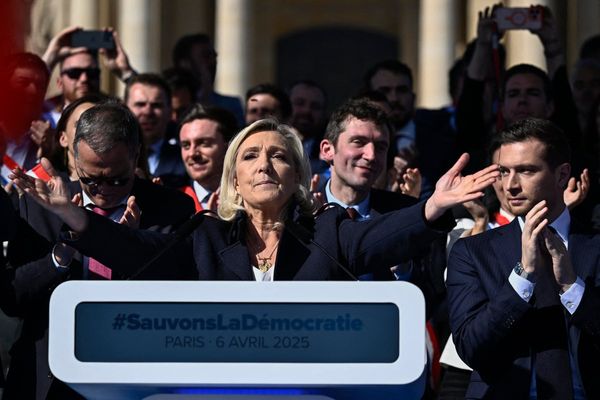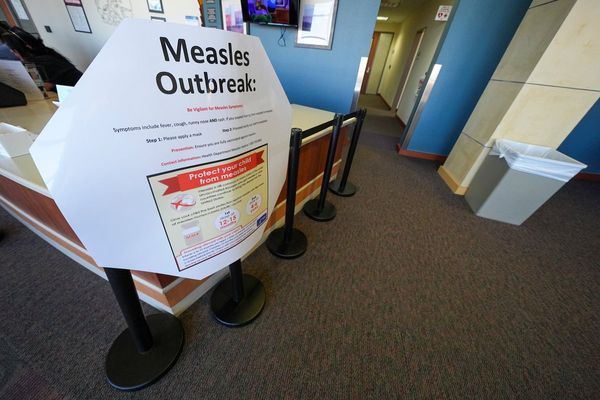
The latest harbinger of doom at the US Open isn’t a bad call or a broken superstition. It’s tennis balls the size of a pumpkin.
As the action on court winds towards the finish, hordes of children can be observed overwhelming ushers to take up position in the front row with these giant balls, a pen and the expectation of a signature. For a player on the brink of defeat, these cherubic autograph seekers aren’t just a sign that their tournament has come to an end. The autograph hoarders, as well as the cocktail fiends and commemorative towel collectors, reveal the extent to which the hunger for personal moments and mementoes has overshadowed the appetite for actual tennis.
The US Open has long styled itself as the glam slam – the place where fans came to see Anna Kournikova and Anna Wintour, and hung around late to watch Jimmy Connors or Andre Agassi rally under the lights. Now, though, the vibes are different. Tennis is still the main attraction, sure. It’s just that, well, it has become a bit more of a background feature. Twenty-four years ago former USTA boss Arlen Kantarian seized control over the US Open with the idea of remaking the tournament into a cultural jamboree to rival the Super Bowl. He cut million-dollar winners’ checks, has conceived AI-based officiating; and spearheaded the Billie Jean King National Tennis Center’s transformation from a gritty New York subway stop to a fancy suburban mall. Bit by bit he dragged tennis into the future.
All the while, the Open became something even more meaningful – a trendy New York City event that has everyone clamoring for their own exclusive piece – generally in the form of a baseball cap with the tournament logo. Even as it suffers from an ongoing contract dispute between satellite provider DirecTV and Disney that has left more than 10 million customers unable to watch on ESPN, the tournament has somehow managed to sustain interest on the ground despite losing the likes of Roger Federer, Serena Williams and Andy Murray to retirement and Rafael Nadal to yet another nagging injury. It has remained compelling despite a chaotic first week that saw fan favorites Carlos Alcaraz and Naomi Osaka crash out early, along with reigning champions Novak Djokovic and Coco Gauff.
A flashy promoter who helped build Radio City Music Hall and the NFL into must-see properties, Kantarian was fond of saying that he wasn’t trying to change tennis. “Our job is to marry innovation with tradition,” he told the New York Daily News in 2006, the year Andy Roddick finished runner-up. The grand spectacle that has resulted is a city monument to conspicuous consumption and aspirational wealth where the tennis has become virtually incidental. You go to get the cap.
A week before the tournament, the US Open held its fifth ever Fan Week, granting the public a free pass to live music and fine dining on the grounds. More than 200,000 people showed up over the course of those seven days to drink in the atmosphere. That no meaningful tennis was being played made the scene all the more confounding, the equivalent of trekking to Katz’s Deli just to sit at Meg Ryan’s table and forgoing the pastrami on rye.
The US Open crowds only got bigger once the tournament was under way this year, with record throngs queueing to get in; it’s a testament to how keen people are to make up for the time lost to Covid restrictions and take advantage of the drastically cooler weather compared to recent years. That’s even as the cost of a day pass on the grounds, once the best value in American sports, has ticked up from around $60 a decade or so ago to well over twice that today (prices are closer to $250 on the secondary market). For the first time ever, the US Open allowed these crowds to flow in, out and around venues during play – like a Jersey diner. This is a marked departure from established etiquette that restricts fan movement to changeover intervals. And while the stars on court don’t seem to mind this new potential for distraction (“I played two tournaments [already] with this rule,” top women’s seed Iga Świątek said earlier in the week, “so that’s fine for me”), they’re still playing tennis – a genteel country club sport. One could scarcely imagine a similar downgrade in decorum for opera performances at the Met.
The US Open used to be a tournament, a proper tournament – transplanted from cloistered surrounds in Forest Hills to public courts in Flushing Meadows. It was very much its own thing, louder and rowdier than Wimbledon and Roland Garros – but mostly because American tennis fans are so passionate. Famously, in 1979, the spectators at Louis Armstrong Stadium were brought to near riot when Ilie Năstase refused to resume a second-round match against fellow bad boy John McEnroe. By allowing spectators to move around freely (within some seating limitations), a purist might argue the US Open has made itself no more special than a late-summer Mets MLB tilt at nearby Citi Field – a place for casuals to eat and shop while the sports people have at it in the background.
Given the long spells fans can spend away from their seats while waiting out agonizingly long games and sets, organizers were bound to wave the white flag eventually. “Does it lead to [spectators] being completely free?” US Open tournament referee Jake Garner asks me. “I think time will tell on that one. For now our approach is to find the right balance between fan experience and player experience.”
Sportswriters used to snicker at Open fans who rocked up to the courts in full tennis kit, as if McEnroe or Martina Navratilova might wave them down for help in a pinch. But because of the Open’s years-long association with New York fashion week, tennis couture is back in fashion. Today’s fans walk out of the Ralph Lauren store outside Arthur Ashe Stadium dressed like the ball crew members on court. They wait in line for $30 lobster rolls in I TOLD YA T-shirts, an easter egg from the Challengers – a watercooler surprise that suffused tennis with zeitgeisty appeal. Tennis has become a full on lifestyle, like F1 did after Drive to Survive and the NFL has since Taylor Swift started showing up at Chiefs games for Travis Kelce.
The synergies between the US Open’s brands and bigwigs have never been more stretched. The civil rights attorney Ben Crump has been advertising his law firm on small sponsor patches worn by US doubles star Taylor Townsend and the Czech Republic’s Tomas Machac. Asked if he had ever heard of Crump, known as “Black America’s attorney general”, Machac told the AP: “A bit. Not much.” That’s despite Crump attending the Open last Sunday somewhat under the radar, no mean feat for him.
Altogether, the US Open is aiming to break the one-million-visitor mark this year; a fair few of those patrons aren’t likely to have heard of Machac or care who else is playing while they’re on site. That the tournament nonetheless has produced two American semi-finalists on the women’s and men’s sides, and after the domestic appetite for a return to tennis’ US-led golden age was so immense, is an irony no one could have seen coming amid the flurry of selfies and splurges. But commerce has surely played a hand in pushing US tennis back to the top. Last year’s tournament brought in nearly 90% of the USTA’s $581m revenue, money that trickles down to player development. Eventually.
Gone are the days when only wealthy Manhattanites schlepped to Queens over the Labor Day weekend on their corporate accounts expressly to say they brushed shoulders with Barack Obama or Zendaya. Now the tournament’s big stars are the Honey Deuce, a $23 vodka lemonade that’s emerged as a must-have Instagram keepsake – and the plastic cup goes home, too. It’s people like Morgan Riddle, the self-proclaimed “tennis Barbie” who dates Taylor Fritz; and Paige Lorenze, the social media influencer girlfriend of Tommy Paul. Fritz and Paul both made it to the second week, with Fritz advancing to his first career grand slam semi-final. “It’s been crazy,” Lorenze told Town & Country magazine. “I think I have anywhere from 15 to 20 brand deals during [the Open]. I am not kidding; I’ve never been this booked before!”
Watching her coolly observe Paul from his player’s box, with designer sunglasses covering her resting gameface, Lorenze doesn’t just break with enthusiastic supporters like Ayan Broomfield, who played against type earlier this week while cheering on boyfriend Frances Tiafoe in a New York Rangers cap. Lorenze looks for all the world like someone who’d much rather be back on her phone, counting likes and follows. “It’s an incredibly old event,” she told T&C, further explaining the US Open. “It’s in Queens every year. The US Open has this aura. You can’t pay for the aura, but you can try to attach yourself through it by sending people dressed in [your] clothes.”







